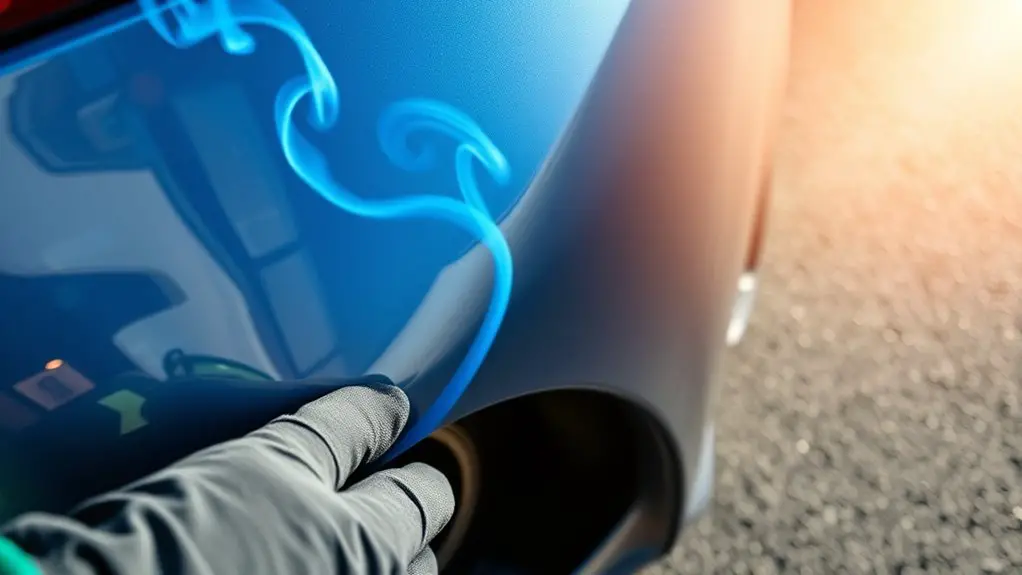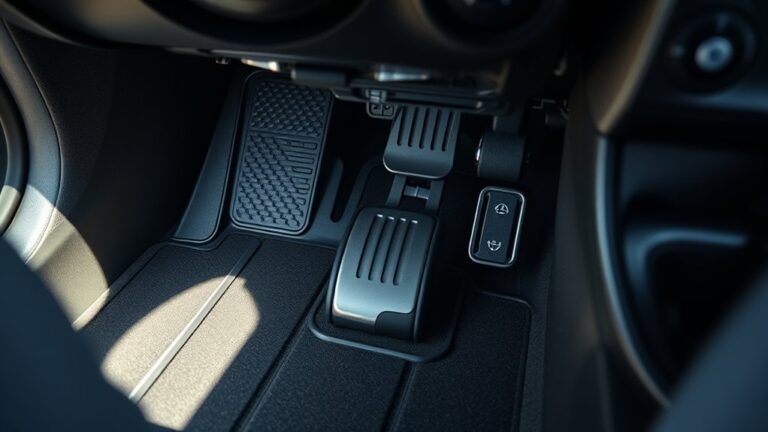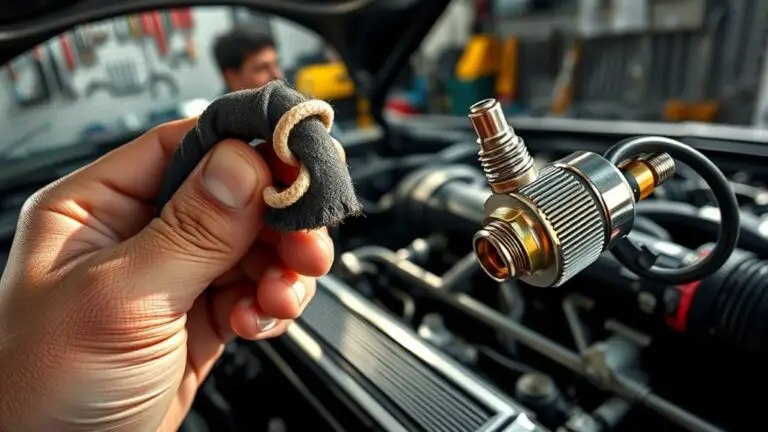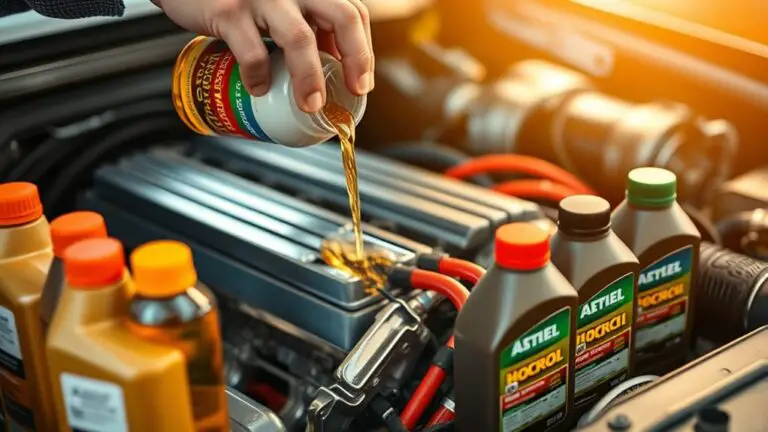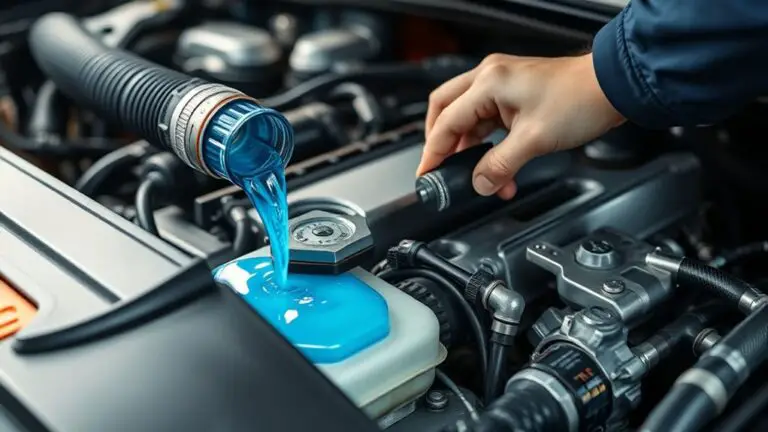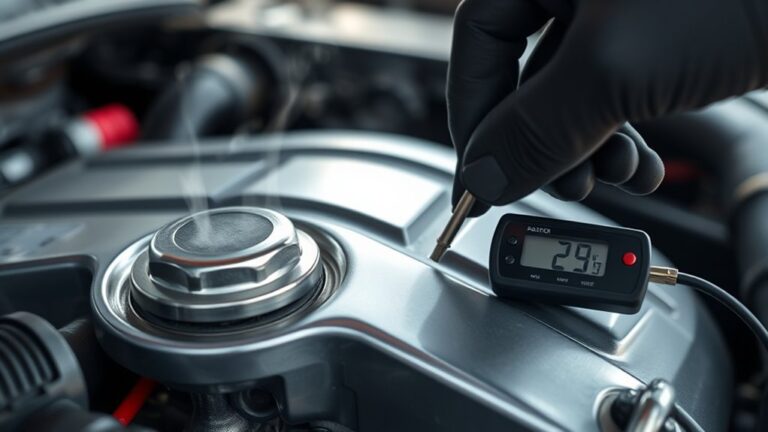Quick Checks for Blue Smoke Before You Visit a Mechanic
If you notice blue smoke from your engine, check your oil level first; excessive oil consumption can mean worn valve seals. Inspect the PCV valve for blockages and make sure your air filter isn’t dirty or damaged. Also, look for exhaust leaks – listen for hissing or popping sounds. Finally, keep an eye on your fuel quality; using the right octane matters. Want to learn more about these checks and how to maintain your engine?
Understanding the Causes of Blue Smoke
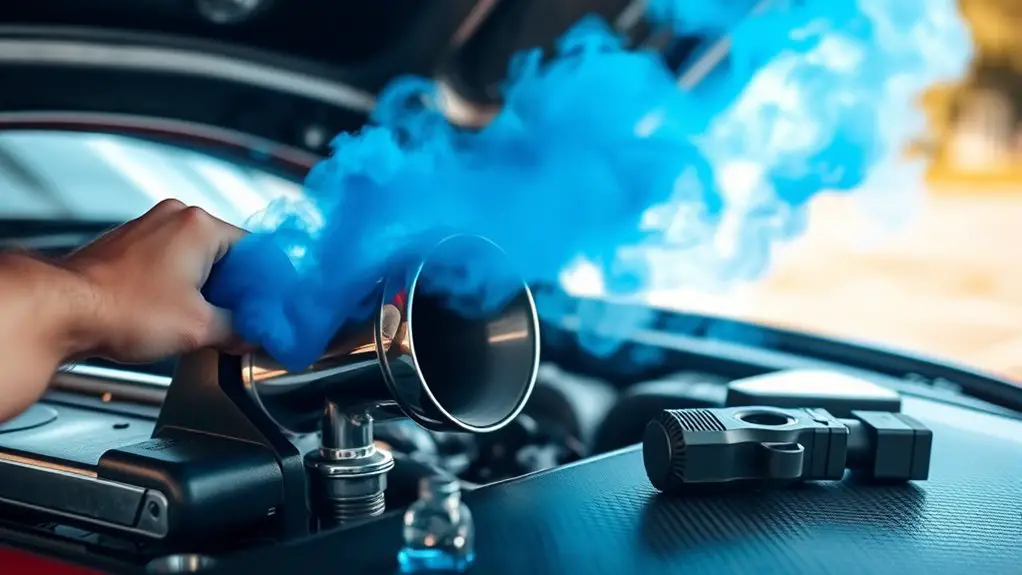
When you notice blue smoke coming from your vehicle’s exhaust, it’s essential to understand what might be causing it. One common culprit is excessive oil consumption, which often points to worn-out valve seals. These seals are critical for maintaining the integrity of your engine’s oil system. When they wear down, oil can seep into the combustion chamber, causing that distinct blue smoke you see.
Ignoring this issue can lead to more significant problems, including engine damage. You might also notice a drop in engine performance or increased oil levels in your system. It’s important to pay attention to these signs, as they can indicate that your engine is working harder than it should. Addressing valve seal issues sooner rather than later not only keeps your vehicle running smoothly but also gives you the freedom to enjoy the open road without worrying about costly repairs down the line.
Checking Your Oil Level
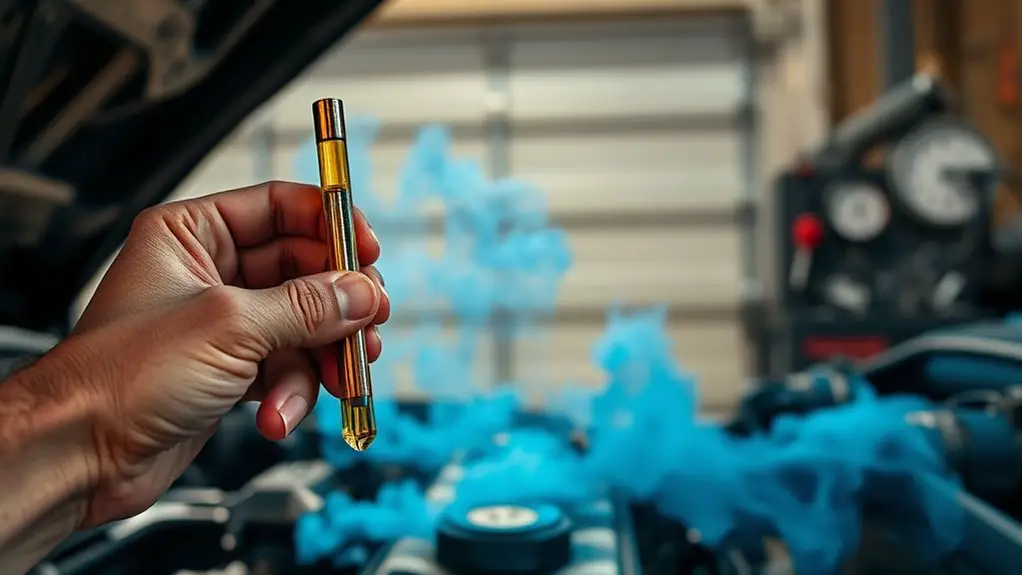
One of the simplest ways to assess your engine’s health is by checking your oil level regularly. Grab your oil dipstick and pull it out; give it a quick wipe to remove any residue. Reinsert it fully, then pull it out again to see where the oil sits on the markings. If it’s low, top it up with the recommended oil type.
While you’re at it, look for oil contamination signs like a milky appearance or a burned smell. These issues can indicate serious problems, so don’t ignore them. If the oil appears gritty or thick, it’s a sign you might need an oil change. Keeping an eye on your oil level not only helps prevent engine damage but also keeps your ride running smoothly. Staying proactive guarantees you enjoy the freedom of the open road without unnecessary hiccups.
Inspecting the PCV Valve
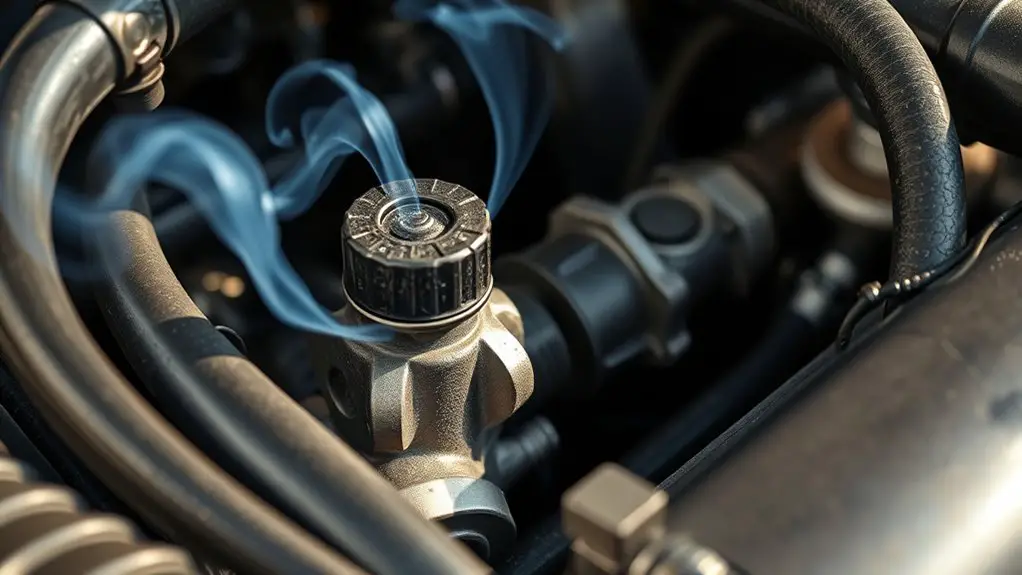
Next, you’ll want to inspect the PCV valve, as it plays an essential role in your engine’s ventilation system. Start by locating the valve and checking for any blockages that could lead to excessive pressure and blue smoke. A clear, functioning PCV valve can help keep your engine running smoothly and prevent further issues.
Locate the PCV Valve
The PCV valve, a small but essential component of your engine’s ventilation system, plays an important role in controlling harmful emissions. To locate the PCV valve, start by consulting your vehicle’s manual, which often provides a diagram of the engine layout. Typically, you’ll find the valve attached to the valve cover or intake manifold. It’s usually a cylindrical or rectangular component with a hose connected to it. Once you spot it, examine the valve function; it should move air freely. If it’s stuck or damaged, it could lead to blue smoke from your exhaust. Keeping an eye on this little part can help maintain your engine’s health and keep your driving experience enjoyable.
Check for Blockages
Before you plunge into inspecting the PCV valve, it’s essential to confirm there are no blockages obstructing its function. Blockages can lead to serious engine problems, including blue smoke. Here are some common blockage symptoms to look out for:
- Oil leaks: If you notice oil pooling under your vehicle, it could signal a blockage.
- Engine stalling: Frequent stalling may indicate that the PCV system isn’t functioning correctly.
- Excessive pressure: A feeling of pressure from the oil filler cap can hint at a PCV blockage.
To confirm blockage prevention, regularly check and maintain your PCV valve. Clean or replace it if necessary. This will help keep your engine running smoothly and prevent those pesky blue smoke issues.
Examining the Air Filter
When you’re troubleshooting blue smoke, don’t overlook the air filter. A visual inspection can show if it’s dirty or blocked, affecting airflow and engine performance. Knowing how often to replace it is key to keeping your engine running smoothly.
Visual Inspection Process
One key step in the visual inspection process for diagnosing blue smoke issues is examining the air filter. This component plays an essential role in how your engine breathes. Here are some visual inspection tips to help you assess it effectively:
- Check for Dirt and Debris: Look for any heavy buildup that might restrict airflow.
- Inspect for Tears or Damage: Any holes or tears can let unfiltered air into the engine, causing problems.
- Evaluate Fit: Confirm the air filter sits snugly in its housing; a loose fit can lead to poor performance.
Cleanliness and Blockage
To guarantee peak engine performance, cleanliness and blockage in the air filter are critical factors to examine. A clean engine relies on proper airflow, and a clogged air filter can lead to airflow issues that may cause blue smoke. Here’s how to assess your air filter:
| Step | Action | Outcome |
|---|---|---|
| Visual Inspection | Check for dirt and debris | Identify blockage |
| Removal | Take out the air filter | Prepare for cleaning or replacement |
| Cleaning | Use compressed air/cleaner | Restore airflow |
| Reinstallation | Place it back securely | confirm proper fit |
| Test Drive | Observe engine performance | Check for blue smoke |
Regularly checking your air filter can help maintain a clean engine and prevent unnecessary repairs.
Replacement Frequency Guidelines
While keeping your air filter clean is essential, knowing how often to replace it is equally important for ideal engine performance. A solid replacement schedule can prevent issues like blue smoke and improve efficiency. Here are some maintenance tips to guide you:
- Every 15,000 miles: If you drive in heavy traffic or on dusty roads, your air filter may need replacing sooner.
- Every 30,000 miles: This is the standard recommendation for most drivers under normal conditions.
- Every 60,000 miles: Consider this interval for high-performance engines or if your vehicle’s manual suggests it.
Staying on top of your air filter replacement can maximize engine health and give you the freedom of a smooth ride.
Looking for Exhaust Leaks
When diagnosing blue smoke from your vehicle, checking for exhaust leaks is essential. An effective exhaust system is vital for peak engine performance, and leaks can lead to that telltale blue smoke. Start your leak detection by inspecting the exhaust pipes, muffler, and joints for any visible cracks or holes. Pay attention to any hissing or popping sounds when the engine is running—these could indicate a leak.
You can also perform a simple test by blocking the exhaust outlet with your hand while the engine is idling. If the engine struggles or stalls, but you see smoke escaping from anywhere else, there’s a good chance you’ve got a leak. Remember, addressing exhaust leaks sooner rather than later not only helps keep your engine healthy but also saves you from costly repairs down the road. Stay proactive, and you’ll enjoy the freedom of a smoothly running vehicle!
Assessing Engine Temperature
After checking for exhaust leaks, it’s important to evaluate your engine’s temperature. A high engine temperature can lead to poor engine performance and might be the cause of that blue smoke you’re seeing. Here’s how to assess it:
- Check the Temperature Gauge: Make sure it’s reading within the normal range. If it’s too high, you need to act fast.
- Listen for Unusual Sounds: A rising temperature often comes with strange noises. Be aware of any knocking or hissing.
- Look for Warning Lights: If your dash has a warning light on, don’t ignore it. This could indicate overheating.
Monitoring Fuel Quality
To guarantee your engine runs smoothly and to reduce the chances of seeing blue smoke, it’s crucial to monitor the quality of your fuel. Start by checking the octane rating of the gasoline you use. Using fuel with the right octane rating for your vehicle can prevent knocking and improve performance. If you’re noticing issues, consider adding fuel additives that clean injectors and improve combustion efficiency. These additives can help make sure your engine burns fuel more cleanly, reducing the risk of blue smoke.
Also, pay attention to where you fill up; reputable gas stations tend to offer cleaner fuel. Don’t overlook the importance of keeping your fuel system clean and well-maintained. Regularly changing your fuel filter can also make a significant difference. By taking these steps, you can maximize your engine’s performance and enjoy a smoother ride without the worry of blue smoke.
Frequently Asked Questions
Can Blue Smoke Indicate a Serious Engine Problem?
Yes, blue smoke can indicate a serious engine problem. It often means oil’s leaking into the combustion chamber, which could lead to costly repairs if left unchecked. You should consider engine diagnostics to pinpoint the issue. Conducting a smoke analysis can help identify the source of the leak. Staying on top of these signs can save you time and money, giving you the freedom to drive without constant worry about your vehicle’s health.
How Can I Temporarily Reduce Blue Smoke?
You can temporarily reduce blue smoke like a magician pulling a rabbit from a hat! Start by adding high-quality oil additives to your engine oil; they can help seal leaks and reduce oil burning. Regular engine maintenance is essential too—check your oil levels, and replace worn valve seals or piston rings if needed. While these methods might not fix the root cause, they can give you some breathing room until you get to a mechanic.
Is Blue Smoke More Common in Older Vehicles?
Yes, blue smoke is more common in older vehicles. As cars age, wear and tear can lead to issues like worn piston rings or valve seals, allowing oil to enter the combustion chamber. If you haven’t kept up with regular vehicle maintenance, these problems can worsen, resulting in blue smoke. Staying on top of maintenance can help extend your vehicle’s life and reduce smoke, offering you the freedom to drive without worry.
Does Blue Smoke Always Mean Oil Burning?
Blue smoke doesn’t always mean oil burning, but it often does signal problems. Did you know that nearly 20% of vehicles on the road experience excessive oil consumption? This can be linked to engine wear, leading to leaks or valve issues. However, blue smoke can also arise from other issues, like coolant leaks. So, before jumping to conclusions, it’s smart to investigate further—your engine’s health and your freedom depend on it!
Can Driving Habits Contribute to Blue Smoke?
Yes, your driving habits can contribute to blue smoke. If you frequently accelerate hard or drive at high speeds, it can lead to accelerated wear on your engine’s components, increasing the likelihood of oil leaks or burning. A more relaxed driving style can help maintain your engine’s health, reducing the chances of blue smoke. By being mindful of how you drive, you can enjoy the freedom of the road while keeping your vehicle in better shape.

